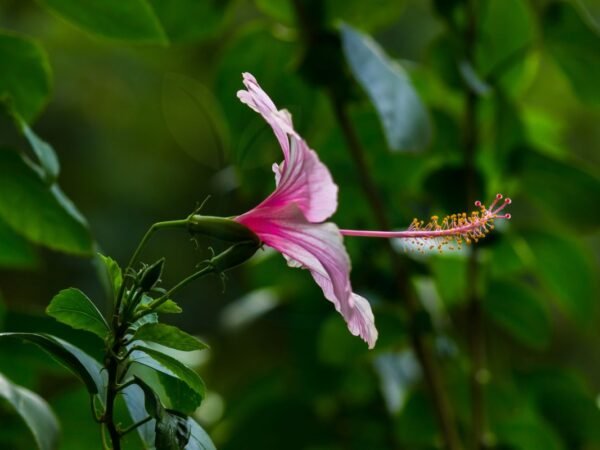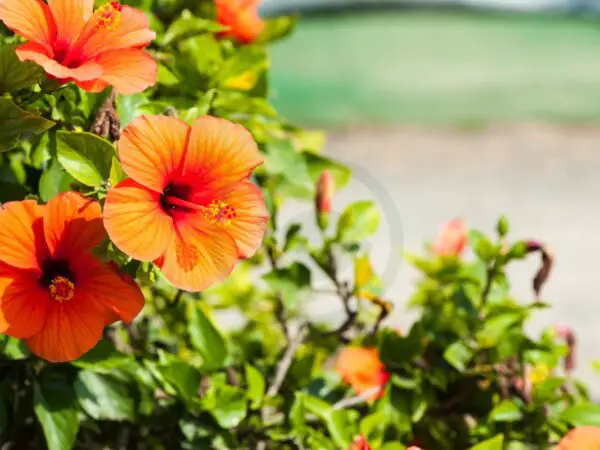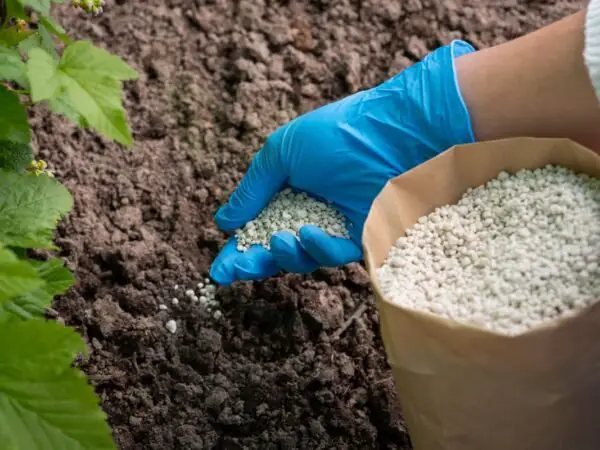If you're wondering, "Can you grow hibiscus from cuttings?" - the answer is a resounding yes! This simple and cost-effective method allows you to propagate beautiful hibiscus plants with ease. With the right guidance and care, you can successfully grow new hibiscus plants from cuttings, adding vibrant colors to your garden effortlessly through outdoor cultivation.
Growing hibiscus from cuttings involves a few key steps that guarantee successful propagation. By following these steps diligently, you can enjoy a flourishing hibiscus garden in no time. From selecting the right cutting to providing optimal growing conditions, each step plays a crucial role in nurturing healthy hibiscus plants. Stay tuned for expert tips and tricks to help ensure your hibiscus cuttings thrive, branch out, and bloom beautifully.
Key Takeaways
-
Propagation Tips: Grow hibiscus from cuttings by following step-by-step propagation methods.
-
Timing Matters: Optimal cutting times can enhance the success of hibiscus propagation.
-
Protective Measures: Shield hibiscus cuttings from pests and diseases for healthy growth.
-
Location Consideration: Choose suitable growth regions for hibiscus cultivation based on climate requirements.
-
Indoor Cultivation: Implement indoor cultivation tips for hibiscus plants in regions with colder climates including miracle grow, seeds, water, and soil.
-
Successful Growth: Ensure successful growth by applying advanced care techniques to your hibiscus plants.
Hibiscus Propagation Basics
Cutting Selection
Choose healthy, non-flowering stems with at least two nodes for successful propagation. Opt for green, flexible stems over woody ones.
Required Materials
-
Gather sharp, clean pruning shears for cutting.
-
Prepare a rooting hormone to encourage root growth.
-
Use well-draining soil mix and small pots for planting cuttings.
Ideal Conditions
Provide warm temperatures for optimal rooting. Ensure high humidity levels to prevent dehydration. Place cuttings in indirect sunlight to promote growth.
Step-by-Step Propagation
Preparing Cuttings
To start propagating hibiscus, begin by removing the lower leaves from the stem to prepare it for planting. Cut the stem just below a node at a 45-degree angle to encourage root growth. Dip the cut end in rooting hormone before planting to stimulate root development.
Rooting Process
During the rooting process, it's crucial to monitor soil moisture levels regularly to prevent the cuttings from drying out. Observe for new growth as a positive sign of successful rooting. Exercise patience as rooting can take anywhere from a few weeks to several months to establish.
Transplanting
Once the cuttings have successfully rooted in water, it's time to transfer them to larger pots for further growth and development. When transplanting, ensure you handle the delicate roots carefully to avoid any damage that could hinder growth. After transplanting, remember to water the cuttings gently to reduce stress and support their acclimatization.
Optimal Cutting Times
Spring Advantages
Spring's active growth phase is ideal for propagating hibiscus from cuttings. The plant's energy levels are high, promoting successful root development. Longer daylight hours in spring support faster growth of hibiscus cuttings.
-
Spring offers optimal conditions for hibiscus propagation.
-
Active growth during this season enhances the chances of successful root establishment.
-
Utilize the abundant sunlight in spring to accelerate the growth process.
Early Summer Benefits
Early summer provides warm temperatures, creating a conducive environment for rooting hibiscus cuttings. The balance between warmth and moisture during this period aids in quicker establishment of new plants.
-
Warm temperatures in early summer support robust root development.
-
The favorable balance of warmth and moisture boosts the success rate of cuttings.
-
Taking cuttings in early summer ensures quicker establishment and growth.
Pest and Disease Protection
Identification Tips
Identify suitable stems for cuttings based on flexibility and color. Look for nodes where leaves emerge for optimal cutting selection. Recognize healthy stems by their firmness and lack of disease.
Prevention Strategies
Implement regular inspection to catch pests early. Encourage natural predators like ladybugs to control pests. Use neem oil preventatively to deter common hibiscus pests.
Suitable Growth Regions
Tropical Climates
Tropical regions are ideal for hibiscus growth, offering year-round outdoor enjoyment. The consistent warmth in these areas fosters optimal conditions for hibiscus plants to thrive. With abundant sunlight and moisture, hibiscus flourishes in tropical climates.
Temperate Zones
In temperate zones, adjust care practices to accommodate varying climate conditions. Shield hibiscus from frost during colder spells in temperate regions to prevent damage. Manage watering schedules and sun exposure levels carefully to support healthy growth in temperate climates.
Indoor Cultivation Tips
Lighting Needs
Place hibiscus in bright, indirect light for optimal growth. Avoid direct sunlight to prevent leaf burn. Provide consistent lighting to encourage flowering.
Potting Advice
Choose pots with drainage holes to prevent waterlogging. Repot hibiscus annually to refresh soil nutrients. Use a well-balanced potting mix for healthy root development.
Cold Hardy Varieties
Midnight Marvel
Midnight Marvel hibiscus features deep red foliage and large blooms, adding a striking touch to any garden. The variety thrives in USDA hardiness zones 4-9, making it suitable for various climates. Ensure ample space for Midnight Marvel's vigorous growth, allowing it to flourish.
Azurri Blue Satin
Azurri Blue Satin hibiscus boasts stunning blue flowers that captivate with their beauty. This variety is known for its compact size and abundant blooming throughout the season. To nurture Azurri Blue Satin effectively, plant it in well-draining soil and maintain regular watering schedules.
Ensuring Successful Growth
Watering Practices
Water hibiscus deeply to promote deep root growth, adjusting frequency as needed based on the environment. Use room temperature water to avoid shocking the roots.
Fertilization Tips
Apply a balanced fertilizer during the growing season, ensuring not to over-fertilize to prevent nutrient imbalances. Opt for slow-release fertilizers for consistent nutrient supply.
Advanced Care Techniques
Pruning Essentials
Regular pruning is essential for hibiscus plants to maintain their shape and encourage new growth. By removing dead or diseased branches promptly, you can prevent the spread of infections. It's recommended to prune your hibiscus after flowering to stimulate the plant to produce more blooms.
-
Prune hibiscus to shape and promote growth.
-
Remove dead branches to prevent disease spread.
-
Prune after flowering for more blossoms.
Overwintering Strategies
When preparing for winter, bring your potted hibiscus indoors before the first frost hits. During the dormant winter period, reduce both watering and fertilization to allow the plant to rest. Ensure that your overwintered hibiscus receives adequate light and warmth for optimal growth during this period.
-
Bring potted hibiscus indoors pre-frost.
-
Reduce watering and fertilization in winter.
-
Provide light and warmth for overwintered plants.
Closing Thoughts
After mastering the art of hibiscus propagation, you are now equipped with the knowledge and skills to grow vibrant hibiscus plants from cuttings successfully. By understanding the optimal cutting times, suitable growth regions, and advanced care techniques, you can ensure the healthy growth of your hibiscus plants. Remember to protect them from pests and diseases while providing the necessary care for their specific needs.
Now that you have unlocked the secrets to propagate hibiscus plants effectively, it's time to put your newfound expertise into practice. Take action by propagating your own hibiscus plants from cuttings and share your success with fellow gardening enthusiasts. Embrace the joy of watching your hibiscus thrive, adding beauty and color to your garden. Your journey to becoming a skilled hibiscus propagator starts now!
Frequently Asked Questions
Can hibiscus be grown from cuttings?
Yes, hibiscus can be easily propagated from cuttings. It is a cost-effective and efficient way to grow new plants with identical traits to the parent plant.
How do you propagate hibiscus from cuttings?
To propagate hibiscus from cuttings:
-
Select a healthy stem cutting.
-
Remove lower leaves.
-
Dip in rooting hormone.
-
Plant in well-draining soil.
-
Keep moist and warm.
When is the best time to take hibiscus cuttings?
The optimal time to take hibiscus cuttings is during the growing season, typically in spring or early summer. This period ensures that the plant has enough energy for successful rooting and growth.
What are the common pests and diseases affecting hibiscus cuttings?
Common pests include aphids, spider mites, and whiteflies, while diseases like powdery mildew and leaf spot can affect hibiscus cuttings. Regularly inspecting plants and maintaining good hygiene can help prevent infestations.
Can hibiscus be grown indoors from cuttings?
Yes, hibiscus can be successfully grown indoors from cuttings if provided with adequate light, warmth, and humidity. Indoor cultivation allows for year-round growth and control over environmental conditions for optimal plant health.
Image Source: Paid image from CANVA




